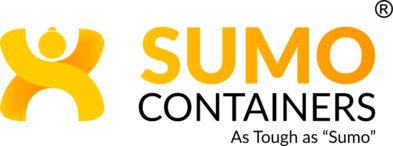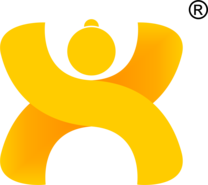Product Design
What is Product Design?This frequently misunderstood field is in need of a proper definition.
Chances are, if you are reading this, you work in the tech industry. Chances are, you are currently, have recently, or aspire to be involved in the creation of a modern digital product. This article aims to give you a deep understanding of the role of Product Design in this process. The answer to what it means to be a Product Designer is constantly evolving. This is my attempt at conveying the breadth, wealth, and utility of this sadly underestimated role.
Product Design is more
To understand what Product Design can do, we need to look at the various forms of design that make up a good Product Designer, how they fit together, and, as if assimilated by the Borg, what they can do when working in concert.
Interaction or UX Designers investigate behavioral patterns and explore the myriad ways in which a particular application might solve a pre-identified user need. These people can create and iterate on solutions faster than most.
Graphic or Visual Designers do what everyone who isn’t a designer thinks all designers do. Pixels! They create beautiful masterpieces of color and depth as they toe the line between positive and negative space. These designers work with drawing tablets. They carry notebooks without lines. Visual Designers put the skeuomorphism into and then out of iOS.
Motion or Animation Designers are the cool ones. If you’re oohing and aahing over that slick menu transition or the way that awesome loading animation comes alive, it’s these guys who get the credit.
User Researchers are the real champions of users’ needs. They delve into the mind of your customers. They ask the difficult questions, and take all the difficult answers. User Research gets to the bottom of everything. The user is always right.
Data Analysts are the scientists of Product Design. They manage A/B tests and live products, collecting and making sense of enormous amounts of data. They are the masters of correlation and causation. These are the guys who announce the winning concept. The verdict comes from a jury of millions of users.
Prototypers craft interactive experiences quickly and with ease. This is an integral part of the product development phase. Prototypes enable us to test our ideas quickly and cheaply. To within days or even hours, go from fifteen potential solutions, to five, to three.
Business Strategists are the ones that at the end of the day answer the question “Why are we really doing this?”. They identify the business value behind every decision. In order for what you’re building to ultimately be successful it is imperative that you understand why you’re building it.
Classically, these have all been individual roles. All of them still are. However, they are also all necessary components of an individual Product Designer.
The times they are a changing. Especially within the tech industry, it is becoming increasingly important to broaden our skills as designers, embracing ones previously thought superfluous. Even ones that don’t exist yet.
Product Design is the whole process
If you look at your Product Designer as someone that makes your solution look presentable, look again. She is there to help you identify, investigate, and validate the problem, and ultimately craft, design, test and ship the solution.
Present a Product Designer with a solution, and they will tell you what’s wrong with it.
Present her with a problem, and she will go to Analytics and gather existing user data. She’ll assemble a cross-functional team from every corner of the business and brainstorm as many solutions as possible. Then, she’ll talk to User Research and make a test plan. She’ll work late and churn out wireframe after wireframe, exploring the vast realm of possibilities. She will throw together prototypes of the most interesting ideas and put them in front of users for quick validation.
Then she will give you several fully formed concepts that all perfectly solve the problem at hand. With clear strategy for how, when, and what to A/B test, and ultimately what the build and release plans should be. And she’ll support the developers through launch. She’ll work with marketing to ensure the story is consistent with the product. She will care for the product long after the first version has shipped, following up on data and metrics to keep validating the design.
A product designer will design the solution, until the problem changes.
Product Design is your brand
Your marketing team, through carefully tending to your message, advertising, and communication, bring you all the users in the world. If your Product doesn’t deliver what your brand promises, those users will not stick around. Trust me on this one.
Product Designers are the caretakers of the foundation upon which the business depends. Discrepancies between what your brand is promising and what your Product delivers are, ultimately, what will cause you to fail. This means that it is of utmost importance that your Product Design team works closely with, and understands the work of, your Marketing team.
Roughly a year ago, we rebranded AYKA Enterprises. We redesigned the logo and our consumer-facing home page, we revamped our advertising style. We said goodbye to the doodles that had been with us for so long, and embraced a new, more human-centered marketing language.
But in so doing, we realized just how far out of line our Product was with our new brand identity. Potential customers were being greeted with this streamlined, cool identity at the door, but once they got in the club, things still looked and felt like a dingy dive bar. Thus, it became imperative to spend the necessary time and effort on bringing our Product’s Design into the 21st century.
Product Design won’t solve your problems
It will solve users’ problems. In the way most beneficial to you. And when I said ‘you’ just now, I meant your business.
A key aspect of Product Design is understanding the business value behind every decision. Data informs everything we do, user research checks our assumptions, and we measure our success through business and engagement metrics.
Product Design is adaptive
This is an ever-evolving world. We all feel it. That which was extraordinary yesterday is mundane today and stale tomorrow. Product Design is still trying to figure out its place within this highly reactive space. Hell, half the platforms we have to design for today didn’t exist a couple years ago. And you can be damn sure there will be more in the years to come.
We need to be flexible. We need to understand that design is timeless. Design is invisible. We need to think platform-agnostically. Solve the problem once. Then apply the solution. Don’t design one solution for each platform.
I recently started running a weekly Prototyping study group with my team at Sumo. Each week a member of the team presents a new prototyping tool or language that they’ve been trying out. Then we learn the basics together. We spend any free time the rest of the week playing around with it, so that the following week we all have something cool to show the others. So far it’s been a lot of fun, and one of the meetings each week that I actually find myself looking forward to the most. I encourage all Product Design teams out there to consider following our lead. It’s an excellent way to stay appraised of the latest developments and to continuously hone your Design Skillz.
Product Design is spreading the knowledge
Rather, it needs to be. As should be fairly clear at this point in my diatribe, we’re just starting to wrap our heads around Product Design. And when I said ‘we’ just now, I meant Product Designers. You know who else doesn’t understand Product Design? Everyone.
Unfortunately, design has classically been seen as purely aesthetic. “Make it pretty”, they say. This is a perception we have to change. We are the custodians of the user experience, and as such it is our solemn duty to educate those around us, above us, under us, about what it is we actually can and should be doing.
When you hire a Product Owner, you likely do so because this person is well-versed in a wide range of disciplines; they understand some front- and backend coding, timing, budget, business value, analytics, management, etc. In many ways, this is how you should be thinking about hiring Product Designers. Sure, they might have a beautiful portfolio, but can they be a key player throughout the entire product development process? A good Product Designer knows a bit of animation, prototyping, coding, research, visual and interaction design. They know when to deliver wireframes, and when to deliver pixel perfect mockups. They know when to use animation, and when to prototype. They know how to convincingly communicate their solutions.
Product Design is this.
The Product Design team at Sumo has worked tirelessly, for several years now, on changing the (mostly internal) perception of Design in general and Product Design in particular. Having been a highly Engineering-driven company from the start, we’ve faced strong wills and perspectives not easily swayed.
In my time here, we’ve gone from a hand-full of mainly Visual Designers, to a team nearly five times the size, comprised of Product Designers, User Researchers, and Prototypers.
We’ve gone from being at the end of the product development cycle (“We need buttons on this new feature we’re gonna launch”) to the very forefront (“We want to investigate all the possible ways of enabling our users to discover new music”). From being a cursory consideration as the beauticians of the Product, to the curators of that which matters most — The User Experience.
This, my friends, is Product Design.

